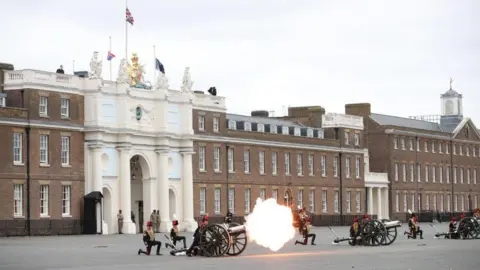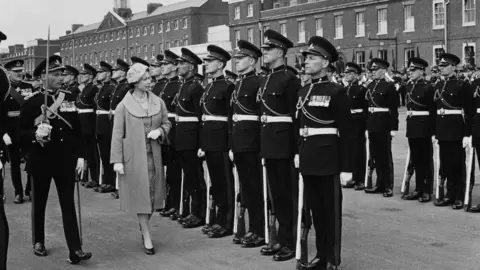Future of barracks 'must reflect Woolwich history'
 Getty Images
Getty ImagesThe plan to close Woolwich Barracks after nearly 250 years as a military base is an opportunity to bring new housing to the area, the local council has said.
Local residents have until 17 March to contribute to Greenwich Council's consultation to "see how people feel" about future developments at the barracks.
The Ministry of Defence says the Woolwich Barracks site has become surplus to their requirements.
Parts of the site - which covers more than 250 acres - may be developed into housing when it becomes available in 2028.
 Getty Images
Getty ImagesThe army will maintain a presence in Woolwich, with the King's Troops remaining on site at Napier Lines.
The Royal Borough of Greenwich said it wants to ensure that if the site is redeveloped, it is managed in a sustainable way which protects the site's valuable heritage buildings.
The borough said the plans should also make "a positive contribution to the distinctive character and heritage of the site, and improve connectivity with the surrounding area".
The Army has maintained a presence at the site since the early 18th century, forming part of a broader military presence in and around Woolwich.
While some of the site is already developed for military uses, large areas are covered by protected open space known as Metropolitan Open Land.
The site is bordered by the A205 on the east and Wellington Street and Artillery Place to the north.
The Queen Elizabeth Hospital, Charlton Cemetery and Charlton Park are located to the west of the site.
'Proud military history'
Anthony Okereke, leader of Greenwich council, said the borough has "a unique military history that we are rightly proud of".
He said: "While we would prefer for Woolwich Barracks to remain as a military barracks, we understand that a decision has been made by the Ministry of Defence to sell the site.
"We therefore want to make sure that any future development is done in a way that preserves the things that make our borough so special, and respects the role that heritage sites like Woolwich Barracks hold in creating a sense of place for our communities."
The council development document says that in terms of density, "development should be compact and utilise the land that has already been built upon, reusing existing protected historic buildings".
It also says proposed development should be sensitively designed to respect the sensitive character of the area, surrounding open space and existing heritage assets.
The north of the site is therefore likely to be the most suitable location for more dense development as it is previously developed and closest to the town centre.
Listen to the best of BBC Radio London on Sounds and follow BBC London on Facebook, X and Instagram. Send your story ideas to [email protected]
